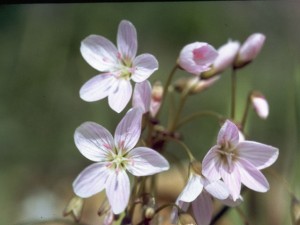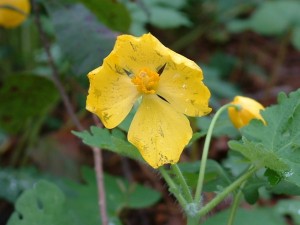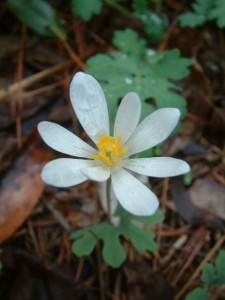
Virginia bluebells enhance the spring scene then totally disappear without a bit of cleanup. © Jo Ellen Meyers Sharp
This post was published here originally April 25, 2009.
At the heart of the season are spring ephemerals, plants that are here for a few weeks and then they are gone. One of my favorites is Virginia bluebell (Mertensia virginica), a native plant in the Eastern United States, which is in bloom now into May.
For a large plant — about 12 inches tall — the Virginia bluebell totally disappears shortly after it blooms. I’ve never had to tidy up after it, making this bluebell a perfect plant.
In early spring, purple-tinged leaves break ground. As they develop, they turn a medium green and may get up to 4 inches long and 2 inches wide. The flowers are pinkish when they first emerge. As they open and mature, they take on their blue hues and bell shape, which give them their common name. I cut these and mix with tulips or let them stand alone in a vase. Indoors they last about a week.
They bloom for about a month in a semi-shady location in my yard. In more shade they may bloom slightly longer and in a sunnier spot, the bloom time will be shorter.
Virginia bluebells are planted as small bulbs, called corms. They usually can be found in mail order or online catalogs. Sometimes they can be found in early spring in pots at garden centers for transplant. Virginia bluebells spread by self-sowing tiny seeds. The result is a fleeting colony of native beauties.
A sampler of other native spring ephemerals:

Spring beauty (Claytonia virginica). Photo courtesy wildflower.org
Spring beauty (Claytonia virginica), which gets about 5 inches tall. Leaves are dark green and the flower is white, pink or blue with contrasting whisker markings on each of five petals.

Celandine poppy (Stylophorum diphyllum). Photo courtesy wildflower.org
Celandine poppy (Stylophorum diphyllum) has four-petaled yellow flowers. The plant gets up to 18 inches tall. Scalloped leaves are poppy like, but broader than the garden poppy (Papaver). It does best in a moist to wet area.

Bloodroot (Sanguinaria canadensis). Photo courtesy wildflower.org
Bloodroot (Sanguinaria canadensis) has a whitish or pinkish flower with a daisy like yellow center and neatly scalloped leaves. It gets about 6 inches tall.